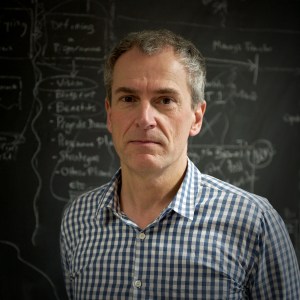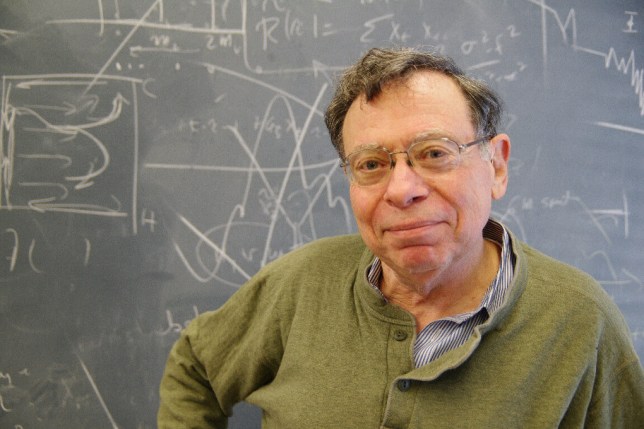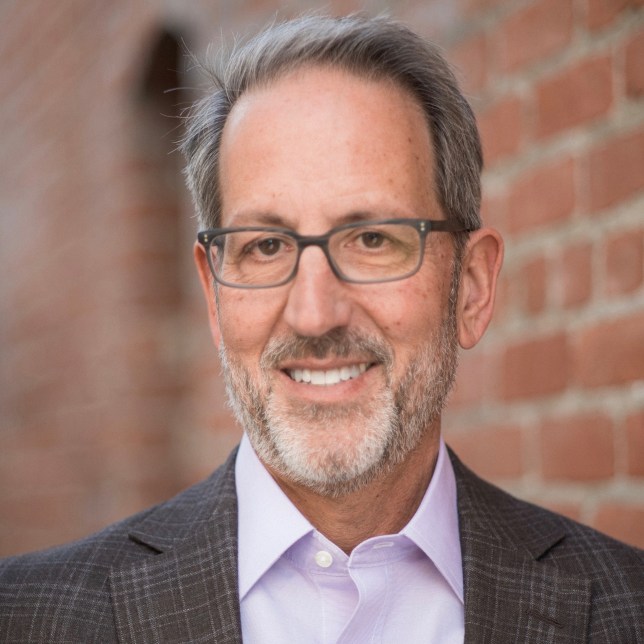- Publisher |
- Michael White
- Media Type |
- audio
- Podknife tags |
- Climate Change,
- Interview,
- Natural Sciences,
- Science & Medicine
- Categories Via RSS
This podcast currently has no reviews.
Submit ReviewMax Moritz regales Mike with some of the many intricacies of modern fire science. The dominant narrative in the Western US might be “long-term fire suppression is leading to severe fire seasons”. While there is some truth here, the individual fire stories are, inevitably, local. Local land use practices, building codes, vegetation stress, and climate change all conspire to make any one explanation … less than convincing. As Max tells it, we need to accept fire as part of our human system, and move towards a more active role in planning our future co-existence.

https://forecastpod.files.wordpress.com/2018/12/episode_77_peter_bauer.mp3
Numerical weather prediction (NWP) is like excellent coffee in the Bay Area: so common that it is now taken for granted, obscuring the decades of expertise, knowledge, and technique underlying the whole operation. In episode 77 of Forecast, Peter Bauer from the European Centre for Medium-range Weather Forecasts tells Mike about the massive and decades-long efforts that have made NWP so incredibly useful for modern society.
But the field still grapples with historically-intractable issues, such as the need to parameterize critical processes like cloud convection, ocean eddies, and atmospheric gravity waves. Maybe the best way to deal with parameterizations … is not to do them at all. Towards this goal, Peter and his colleagues are now pushing forward on a preposterously ambitious proposal called Extreme Earth, in which they would conduct NWP at ~ 1 km resolution, thereby allowing simulation of the key physical processes. Doing so, however, demands a 10,000x increase in computational power, a mind-boggling challenge that goes way beyond the usual approach of bolting together thousands of processors.
Extreme Earth also proposes to invert the usual scientific information flow in NWP in particular and application-oriented science in general. The normal process goes something like: (1) scientists decide what they think the user community might want (2) scientists spend years developing such products (3) scientists show policy/management/public the new product (4) intended audience yawns (5) repeat process. In Extreme Earth, the goal instead would be to hand the reins over to the users, so that they would be able to design the experiments and information flow that would best suit their needs.
How any of this would work is a research question, but it’s one that Peter and the Extreme Earth community are keen to tackle. If funded, to the tune of about a billion euro, the project would certainly represent the most ambitious current program to take weather and climate modeling to a new phase of scientific rigor and societal relevance.

https://forecastpod.files.wordpress.com/2018/12/episode_76_steve_running.mp3
Steve Running from the University of Montana helped to invent the field of large-area, quantitative ecology. Steve was also my MS and PhD advisor – a role that doubtless was the most fulfilling of his career. This August, Steve celebrates his retirement with a reunion of lab members and close colleagues — a reunion that I will unfortunately miss due to an extended overseas trip. In lieu of my corporeal presence, I am contributing this Forecast interview to the party. I hope that the attendees — and the broader Forecast audience — will enjoy the look back at Steve’s long career and many contributions to the now-accepted but then-fringe use of remote sensing and modeling to address some of the big questions in terrestrial ecology.
white.jpg" alt="running white" width="711" height="473">Steve and Mike at Wimbledon circa 2010
https://forecastpod.files.wordpress.com/2018/12/episode_75_yao_tandong.mp3
Yao Tandong tells Mike about realizing his long-held dream: working of the Tibetan Plateau, now as director of the Institute for Tibetan Plateau (ITP) Research (and much else besides!). For Tandong, it all began in 1978 when he was initially exposed to Tibetan glaciology. It cannot have been an easy path. Tandong’s parents were minimally educated, and he was among the first cohort of Chinese students to obtain a western-style MS and PhD. He then spent a decade working in France and the US, forging long-running relationships with some of the best-known scientists in the ice coring community.
Tandong recounts the reformation of Chinese science institutions: the purging of staff and institutes, dealing with systemic nepotism, entrenched benefits system. The ITP arose from the ashes, with funding of about $35 million and now another $250 million for Tibetan Plateau and Third Pole research. The scope is simply astonishing, and yet another indicator of China’s rise to global prominence in big science.
yao-image.jpg" alt="tandong-yao-image.jpg" width="644" height="483">
https://forecastpod.files.wordpress.com/2018/12/episode_74_belinda_medlyn.mp3
The land biosphere takes up a big chunk of atmospheric CO2 emissions. But how, where, and for how long remains an area of, ahem, active research. Or put another way, there’s a lot we STILL don’t know about how increased CO2 will manifest, or not, as an ongoing increase in the terrestrial uptake of carbon. Belinda Medlyn and her colleagues are hot on the topic, with experiments, theoretical analysis, and swaths of models. Despite, or perhaps because of, the wild complexity of the interactions, the field is fertile ground for this kind of multidisciplinary exploration, and Belinda talks Mike through some of the most compelling topics in the field — all of which are under intense debate (N limitations, anyone?).
Belinda has also worked hard to build her career while having the family life she wanted. For her, this meant extended periods of part-time work while raising her sons, before returning to a full-time position. Belinda’s example shows that — with the right support — one can commit fully to both family and career, especially if maximum effort on both isn’t contemporaneous. For Belinda, the separation of priorities over time was hugely beneficial, and highlights the need for a more flexible attitude to career progression and development.
medlyn.jpeg" alt="Hawkesbury Institute for the Environment" width="644" height="429">Credit: Hawkesbury Institute for the Environment
https://forecastpod.files.wordpress.com/2018/12/episode_73_sergey_gulev.mp3
Sergey Gulev from Moscow State University grew up in the Soviet Union, forged a career as an oceanographer, and then witnessed the dissolution of much of what he and his colleagues had built. Gone were their four ocean-going ships, and the then-Russian science community was not able to capitalize on the modeling and remote sensing that came to dominate much of oceanography in the late 20th century. Sergey moved to Germany, and could easily have built a career in the West. Instead, he returned to Russia, worked for a pittance, and over many years, worked to rebuild oceanography in Russia.
gulev.png" alt="sergey-gulev.png" width="377" height="469">
https://forecastpod.files.wordpress.com/2018/12/episode_72_carl_wunsch.mp3
Carl Wunsch is at the heart of many of the major advances in modern physical oceanography. The World Ocean Circulation Experiment, satellite altimetry, acoustic tomography, and Estimating the Circulation and Climate of the Ocean: all are hard to imagine without Carl’s involvement. In this extended interview, Carl tells Mike about these and many other aspects of his decades of work in the field. Along the way, we hear tales of growing up in Brooklyn, Henry Stommel’s sprawling legacy, the sometimes intense conflicts within the community, the problems of working in a data-poor field, and the role of personality in making, or stalling, a career. It’s a one-stop history of the field, and a deeply personal insight into how major science questions are conceptualized and addressed.
 Carl Wunsch (credit: Helen Hill)
Carl Wunsch (credit: Helen Hill)
Music: Easy Job by the Dead Rocks. CC BY-SA.
https://forecastpod.files.wordpress.com/2018/12/episode_71_carolina_vera.mp3
Carolina Vera from the University of Buenos Aires tells Mike about her work on the South American monsoon. Relative to the Indian and Asian Monsoon, the South American Monsoon is understudied — but equally fascinating. The bulk of the land mass is centered near the equator, amplifying the role of tropical ocean-atmosphere interactions. The Andes run north-south, funneling a jet of moisture to Carolina’s back door. Intense dipoles operate, such that one area experiences drought and heat waves while another — not too far away — experiences flooding. Carolina and her colleagues are now working to build their emerging knowledge into actionable management tools, with real-world implications. The conversation wraps up with a discussion of Carlina’s vast experience in international science, and what seems to work best. The answer: diversity, and not pretending that a North American and European perspective represents a global perspective.
vera.jpg" alt="carolina-vera" width="278" height="300">
Music: San Telmo, by Diego Acco CC BY-NC-SA 4.0
https://forecastpod.files.wordpress.com/2018/12/episode_70_sarah_kang.mp3
Sarah Kang from the Ulsan National Institute of Science and Technology tells Mike about her work to understand the atmospheric and oceanic dynamics that link the extratropics to the tropics. Paleoclimate research has long shown that climate perturbations with strong Northern Hemisphere imprints — like Dansgaard-Oeschger events — are associated with movements of the Intertropical Convergence Zone (ITCZ). But it took a long time for a theoretical understanding to emerge, and Sarah spent much of her PhD at GFDL and postdoc at Lamont probing some of the many mechanisms at work. Recently, work focused on the Southern Ocean seemed to reveal that the tropics might respond fundamentally differently to southern vs. northern forcings. Ongoing work by Sarah and her colleagues, however, is now pointing to a related mechanism, but one that is driven instead by the Southern Ocean’s vast capacity to redistribute heat. Sarah is co-leading the Extratropical-Tropical INteraction model intercomparison project, which should lead to a sharper understanding and perhaps a clearer insight into future changes.kang.jpg" alt="sarah kang.jpg" width="644" height="429">
Sarah discusses her experiences navigating a career in Korea: being the only woman out of a faculty of 21; going on sabbatical before getting tenure; the intense focus on metrics in the tenure process; and having a husband who is the only doctor who’s ever taken parental leave at his hospital.
Sarah is the only guest on Forecast who’s (1) gone into precisely the same career as a parent and (2) gotten her PhD from her father’s postdoc advisor (the brilliant Isaac Held)! But it wasn’t because she found her father’s line of work so compelling. It was the lifestyle, the people, and the passion — something that a lot of scientists can doubtless relate to.
https://forecastpod.files.wordpress.com/2018/12/episode_69_jay_famiglietti.mp3
Jay Famiglietti from NASA’s Jet Propulsion Laboratory tells Mike about taking the plunge into using the GRACE gravity-measuring satellites for hydrology research. Keep in mind, this was at a time when hydrology was viewed as noise in the gravity signal, and that Jay was just starting off as an academic with his first graduate student, Matt Rodell. But making this kind of leap — from surface hydrology in Jay’s case — is of course what so often leads to step changes in science. Over the past decade, Jay and his colleagues have revealed the shocking reductions in groundwater in many water stressed parts of the world, including India and the Central Valley. Although perhaps best known for his work with GRACE, Jay is also a noted modeler, and much of his current work focuses on an ambitious data assimilation approach for simulating the real time hydrological state of the western United States at high resolution. And now, Jay is taking another plunge, this time to the University of Saskatchewan, where he’s landed a huge position as Research Chair in Hydrology and Remote Sensing.

Music: SODAR by Scanglobe and Parallel Park by Ziggurat, both CC BY-NC-SA 4.0.
This podcast could use a review! Have anything to say about it? Share your thoughts using the button below.
Submit Review





